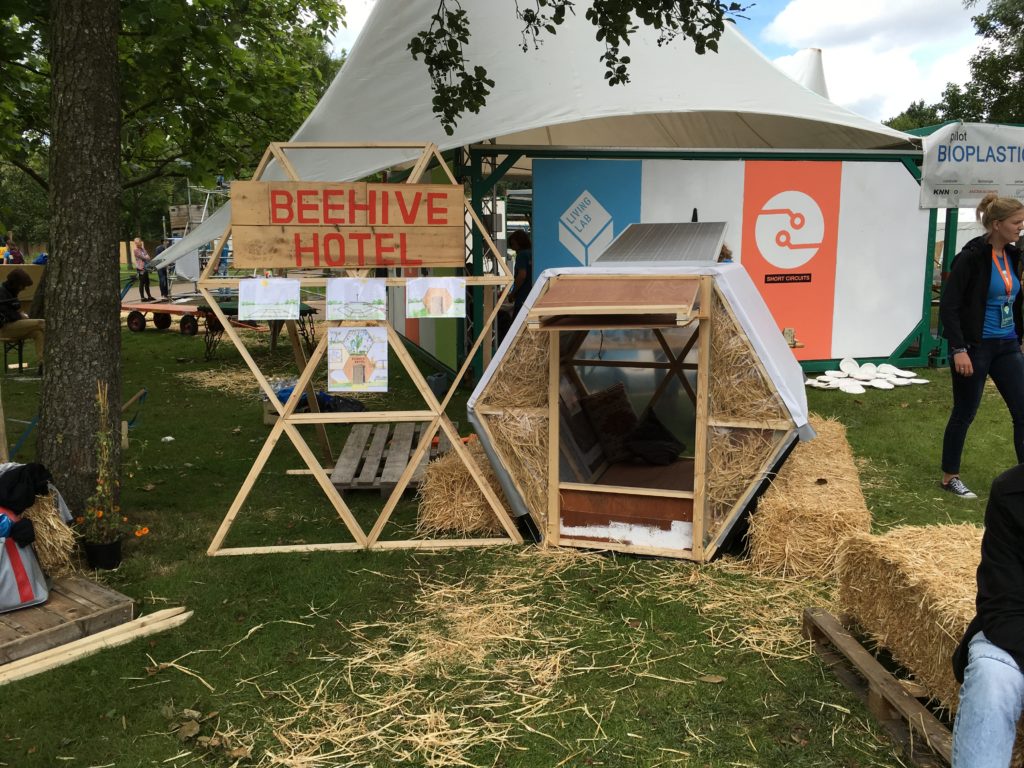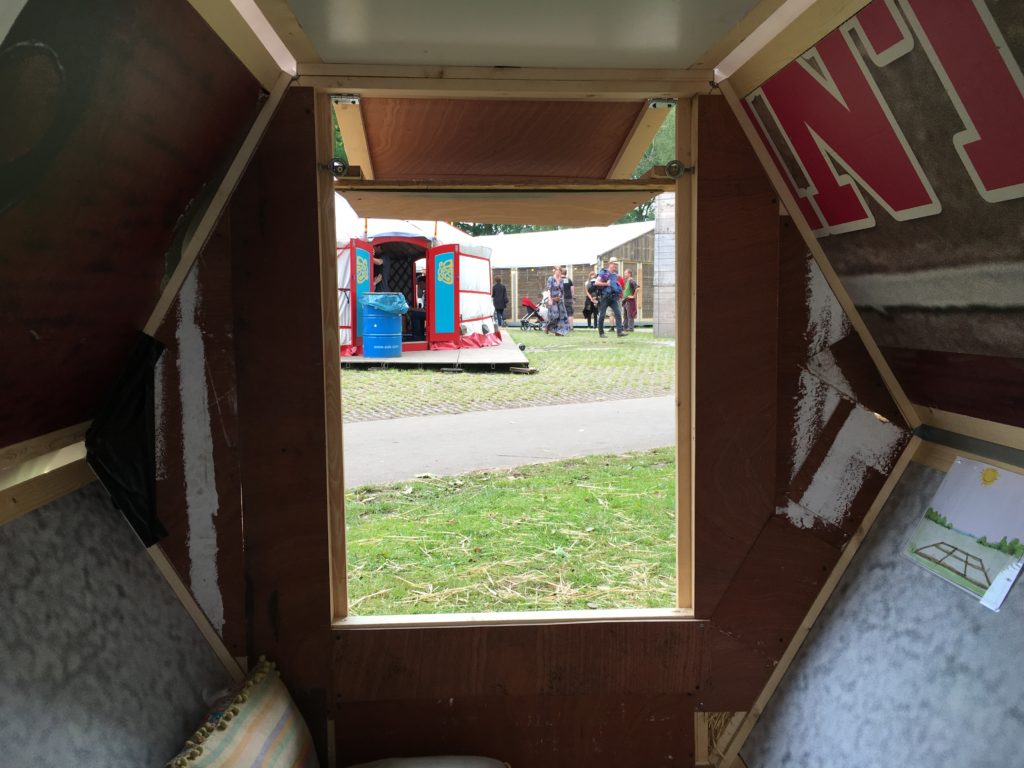Our “think tank” Co-Creation was asked to think of a solution for sleeping arrangements surrounding the Leeuwarden Cultural Capitol event in 2018. The estimate was that there needed to be twice or even more beds to hold people in during this year long event. The preservation of bees was always a main pillar in all of the think tanks idea’s and so the Beehive hotel was born!
Beehive Hotel
Beehive Hotel first concept
These images were the embodiment of our first concept session about the Beehive Hotel. The first version was a single person capsule with a futuristic look. We also knew we had to do something to extra to offer something a simple tent didn’t had so we added a power socket to charge a mobile device for example. This would be powered by solar panels on top of the capsules and the collected energy would be stored in battery packs. This version also had a large storage space under the bed lit with led strips. Even in this first version we knew the main construction would be of some wood like material. As a finishing touch we added a little roll up cloth to ensure the users privacy.
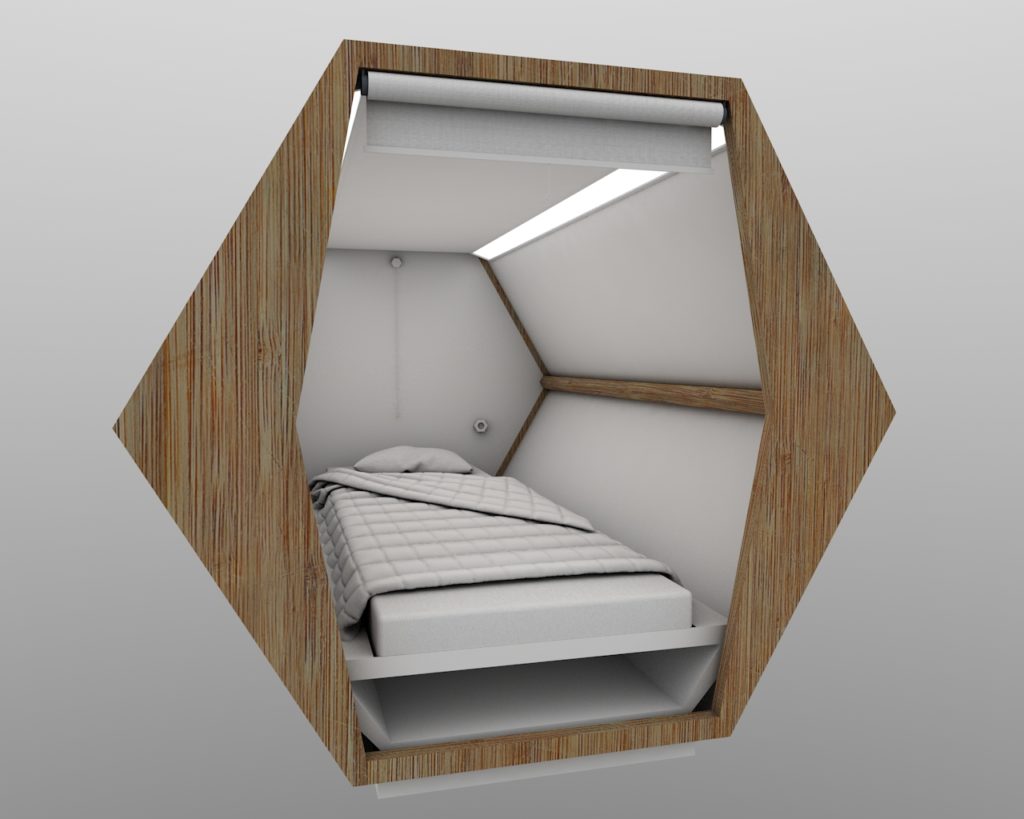

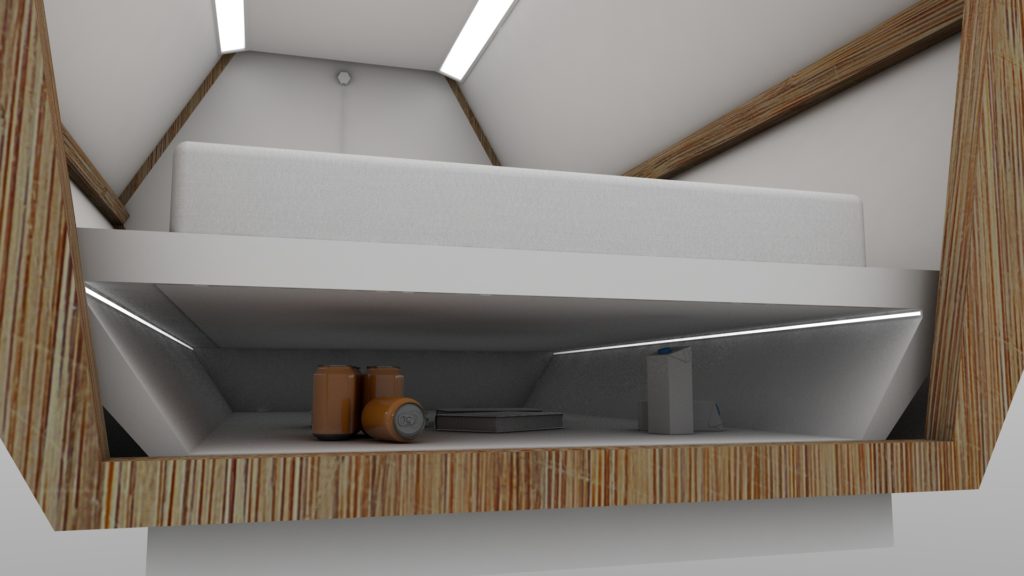
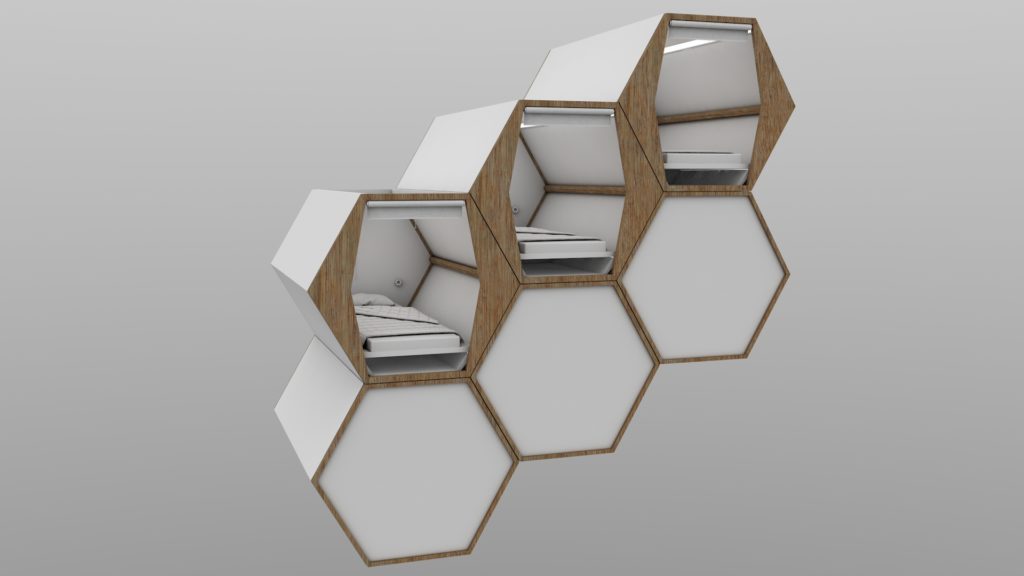
Beehive Hotel version 1.1
Version 1.1 still had that futuristic look. We played a lot with how these were going to stack and the placement of the solar panels. We ended up with the setup below because that left room for the ladders and it made sure that groups could be separated to provide some privacy. We also added a small concept of a possible bathroom like capsule. The cutoff half capsules would house the batteries storing the power from the solar panels.
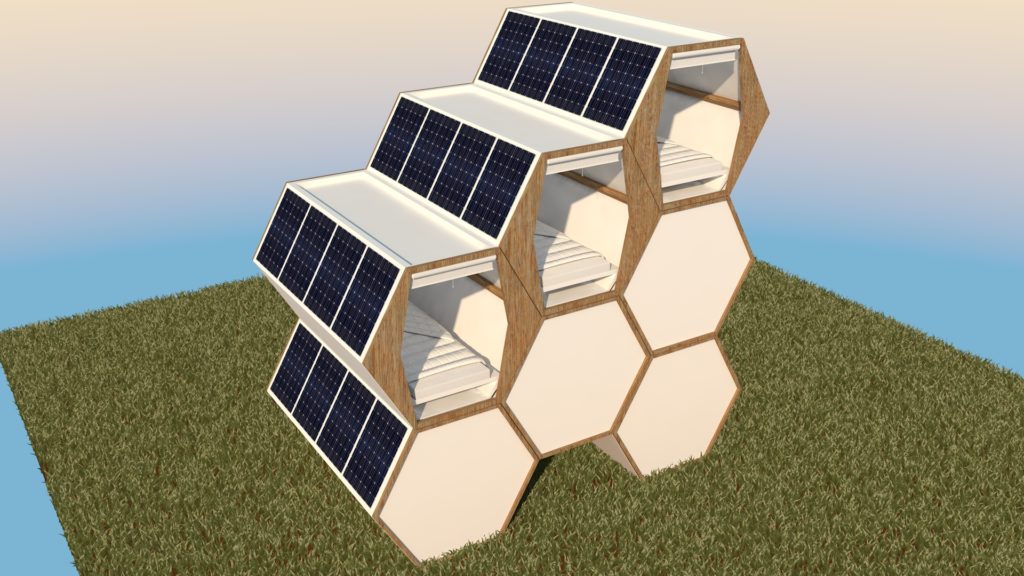
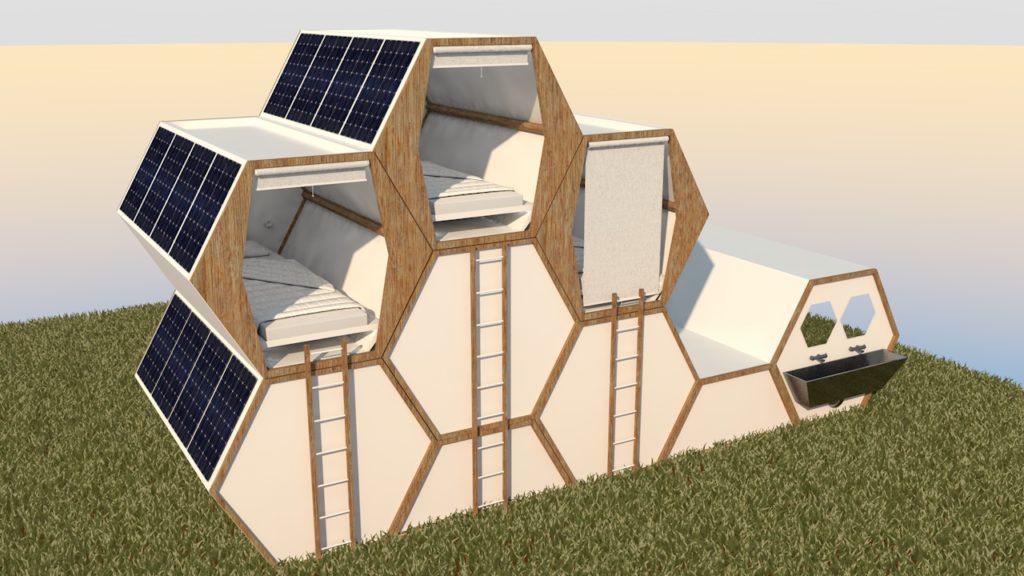
Beehive Hotel version 1.2
Version 1.2 was a major upgrade compared to version 1.1. This version had room for a two person matrass and got a bit longer to make room for a storage hatch. This version also incorporated some load bearing engineering with a cross in the back and a sturdy door.
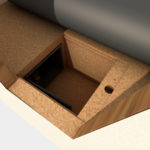
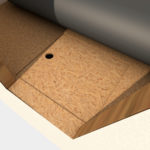
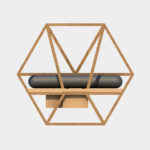
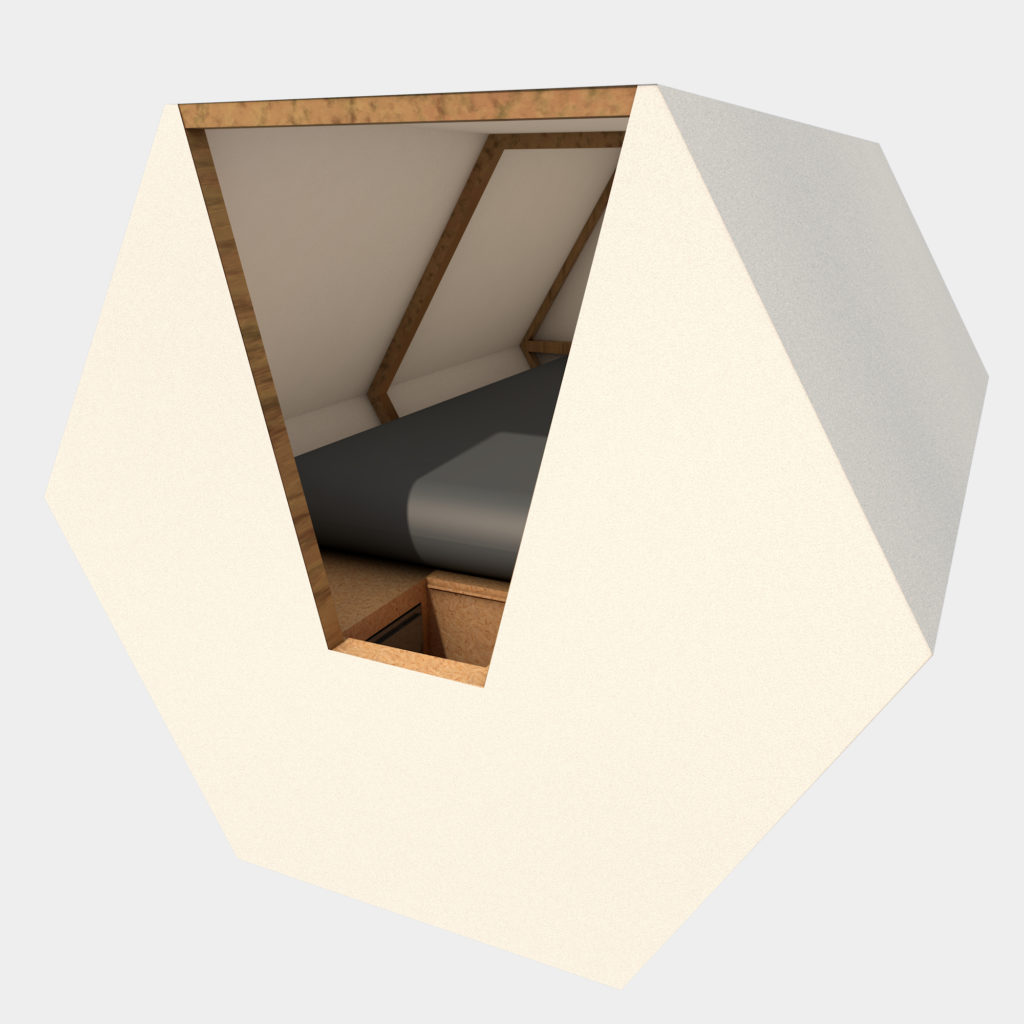

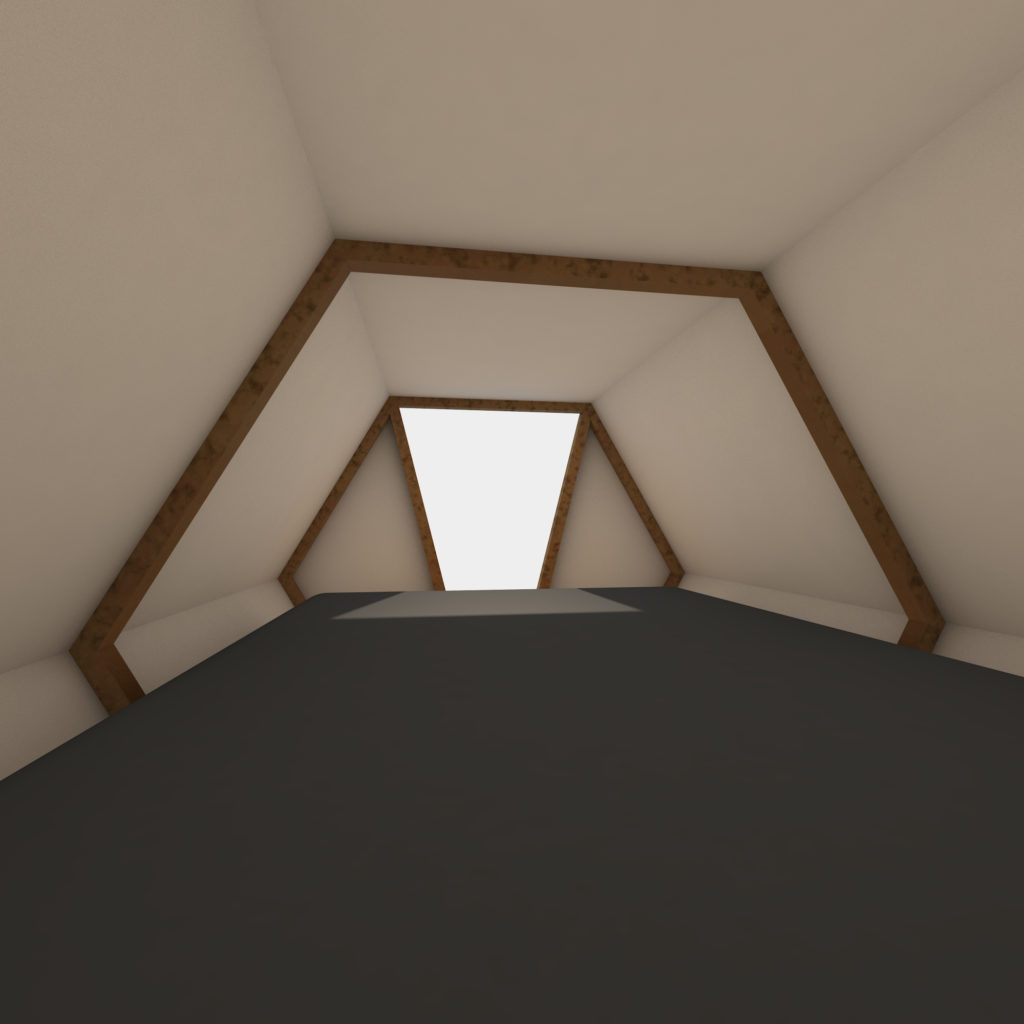
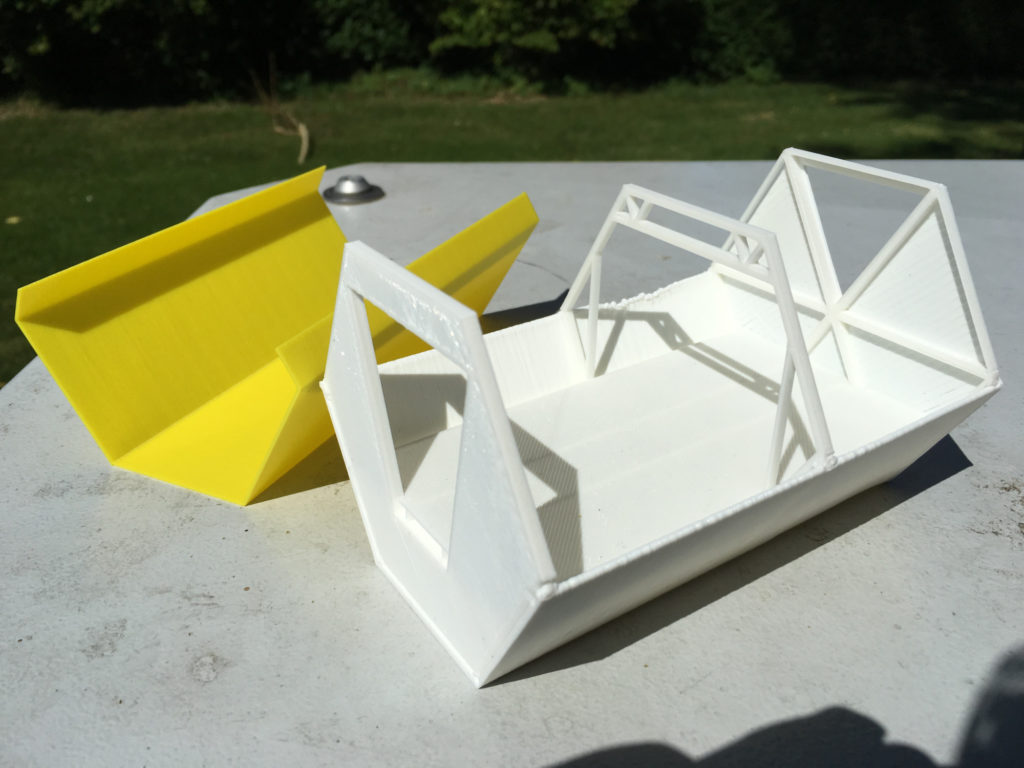
Prototyping (scaled)
A few people in our group didn’t like the digital prototypes I was presenting so I decided to use a new prototyping tool called “3D Printing”. For that time it was still new to us but we had access to a 3D printer and I was able to convert my 3D models to a printable prototype.

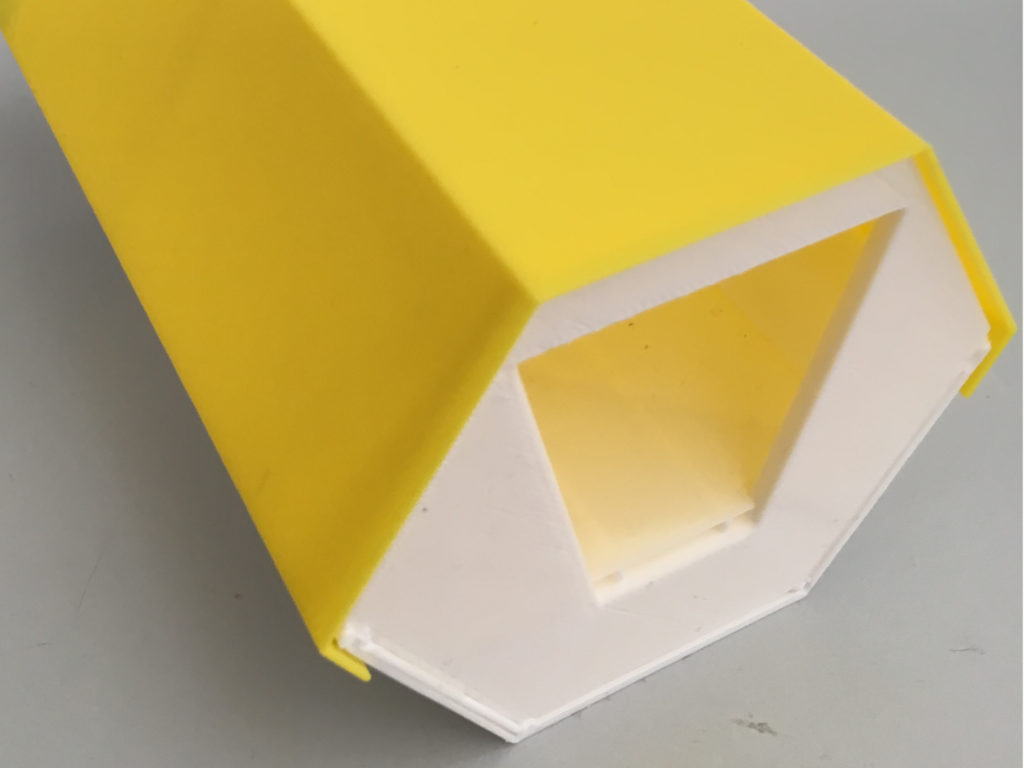
Building plans
The most difficult part of the build was getting the angles right on the hexagons. The hexagon in the back was made up by six triangles which connected in the middle in a star like pattern. We were told that this would be a really strong method of creating hexagons. We also knew this worked because we had seen it been used in another project I worked on called “koepelkas”.
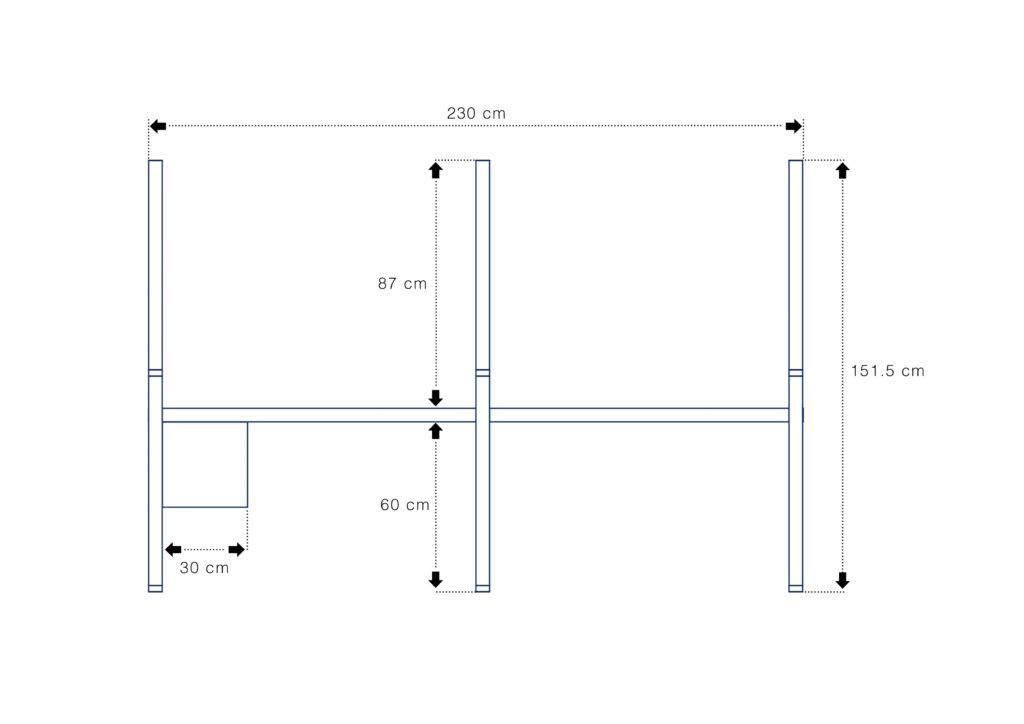

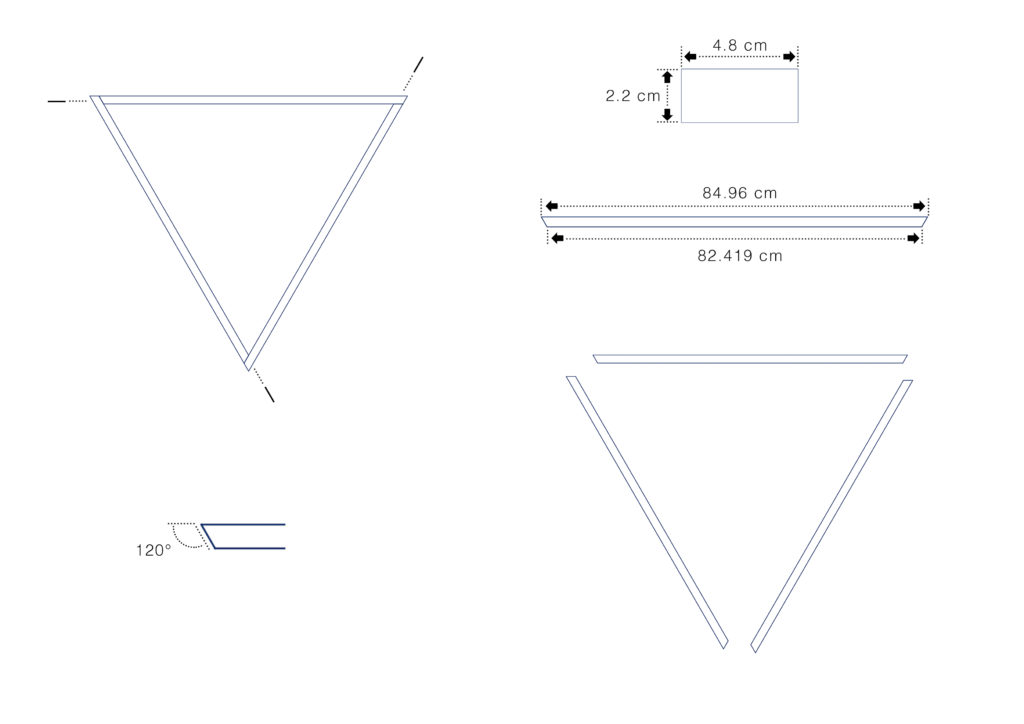
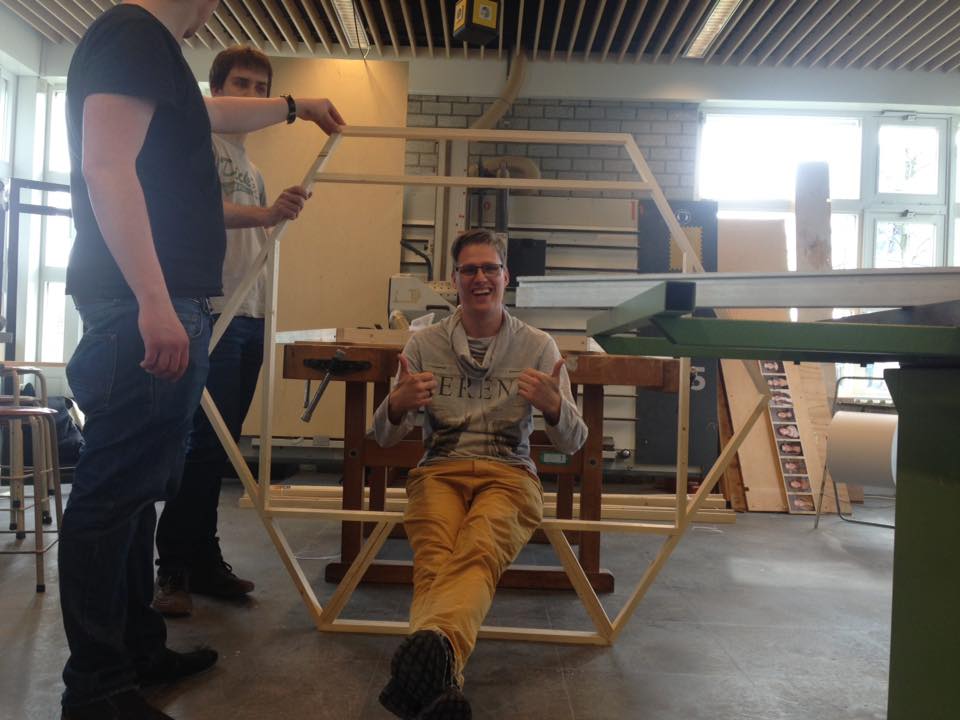
Building the first full scale prototype
We started on building a full size prototype in the workshop of the NHL Hogeschool. This full size prototype was based on my drawings and did not feature an exterior enclosure yet because we hadn’t decided on a material.
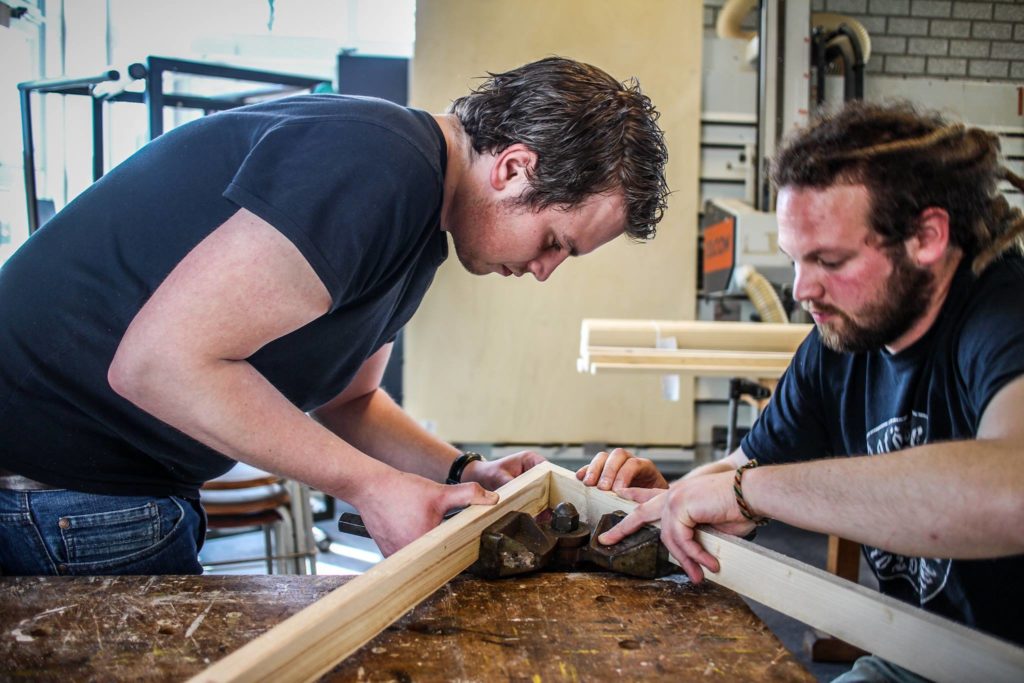
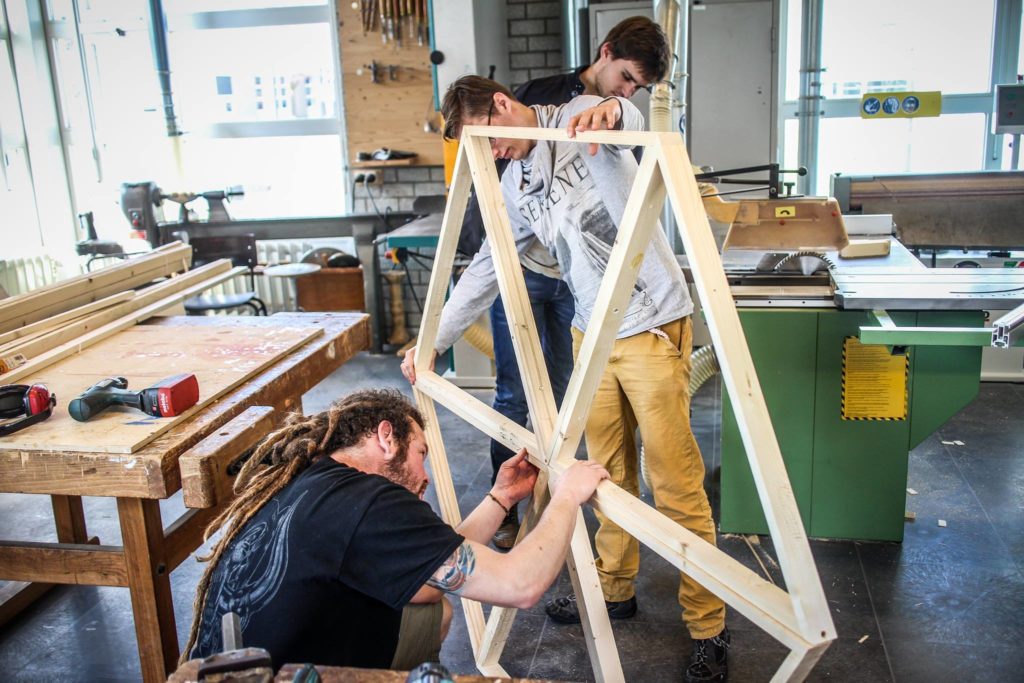
LC Awards
While getting the first full scale prototype ready we also entered a local competition called LC Awards. This is a competition between students of the NHL. We entered last minute and won third place!
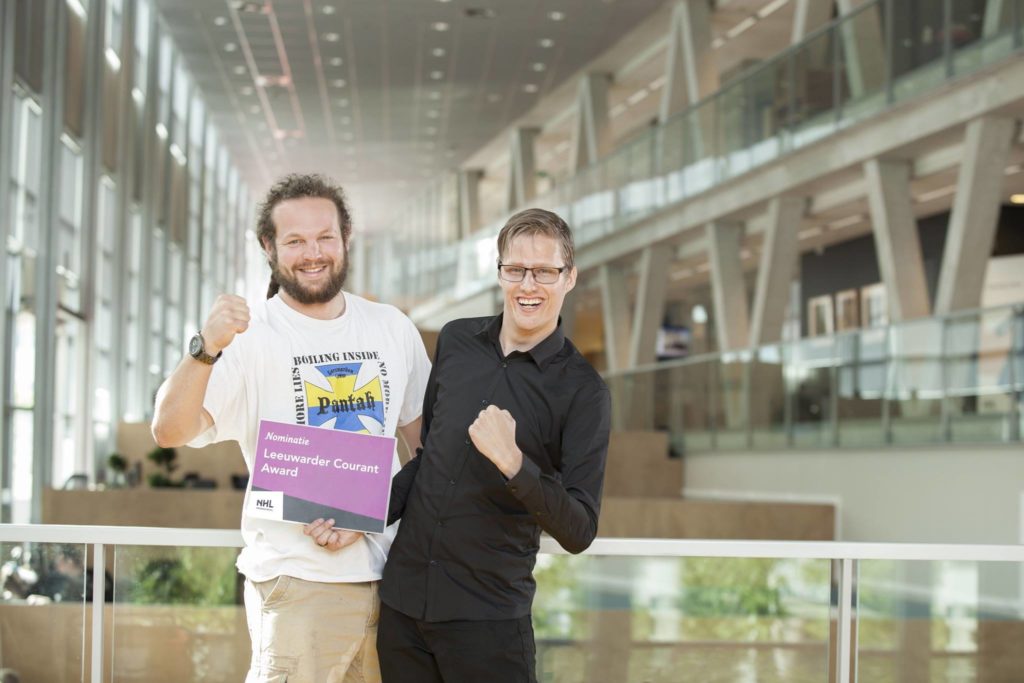
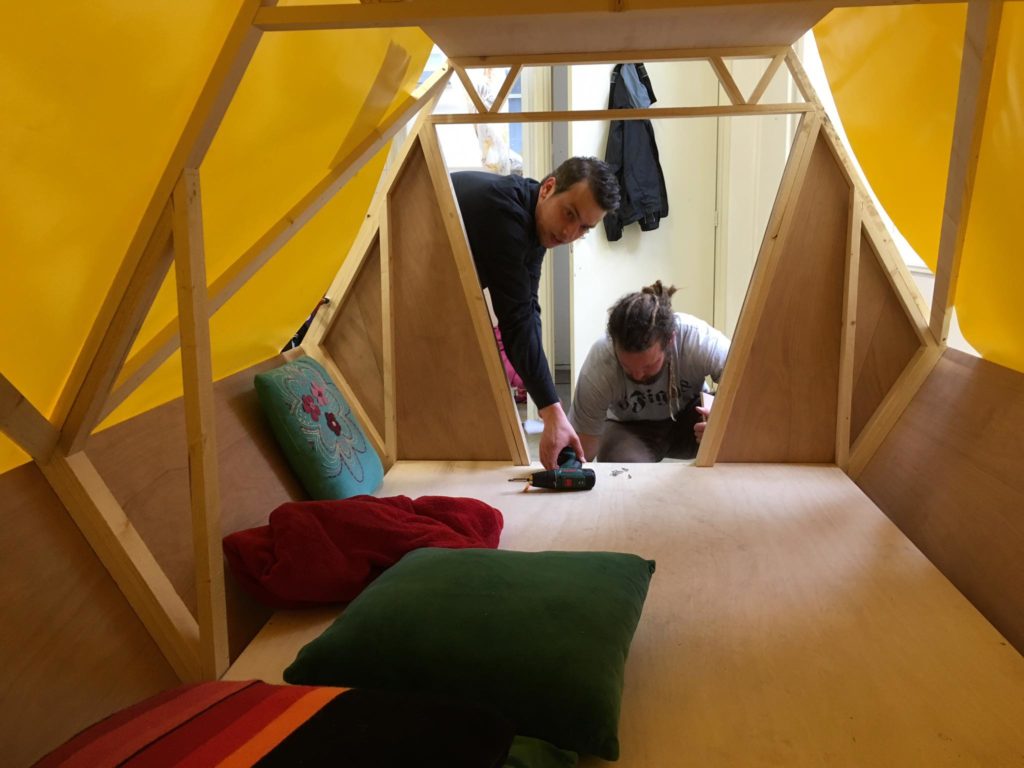
Finishing touches
We decided on a flexible outside made from a durable tarp like material. This was mostly to reduce the weight and to make it rainproof. The front and back were closed off with some left over materials. And we added a small aluminium strip to protect the wood.

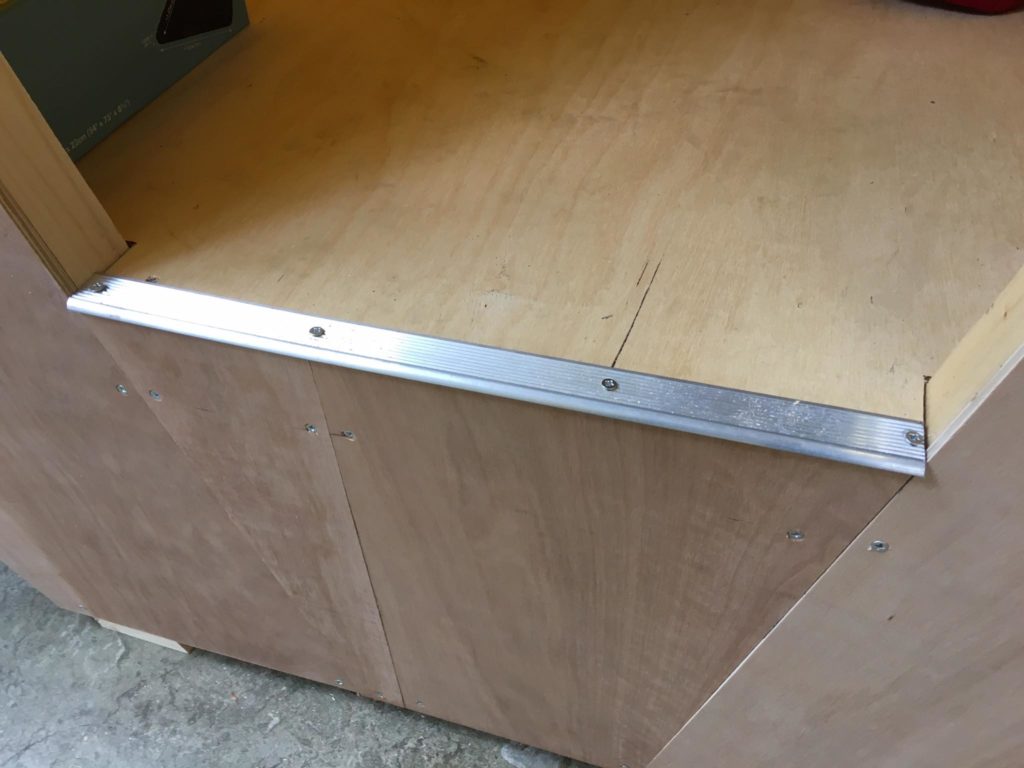
Beehive Hotel at the Kruidhof
Our first real size prototype of the Beehive Hotel was transferred to the Kruidhof in Buitenpost. Here it will stay and be used by the public that visits the Kruidhof.
The Kruidhof is the largest botanical garden of Europe and hosts around 3000 different plants and herbs.
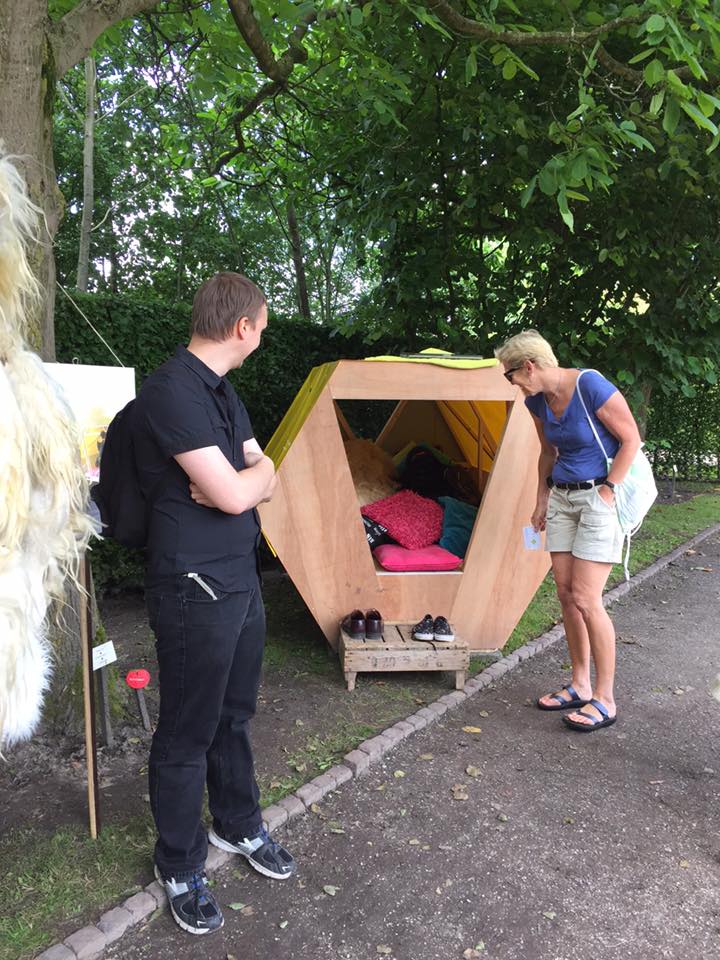

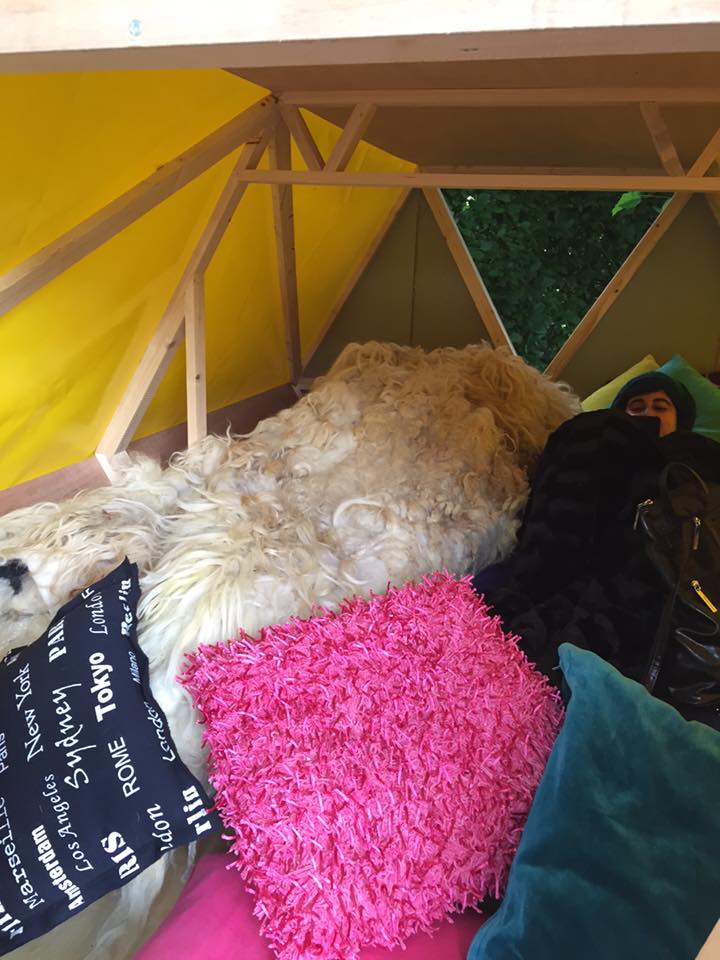
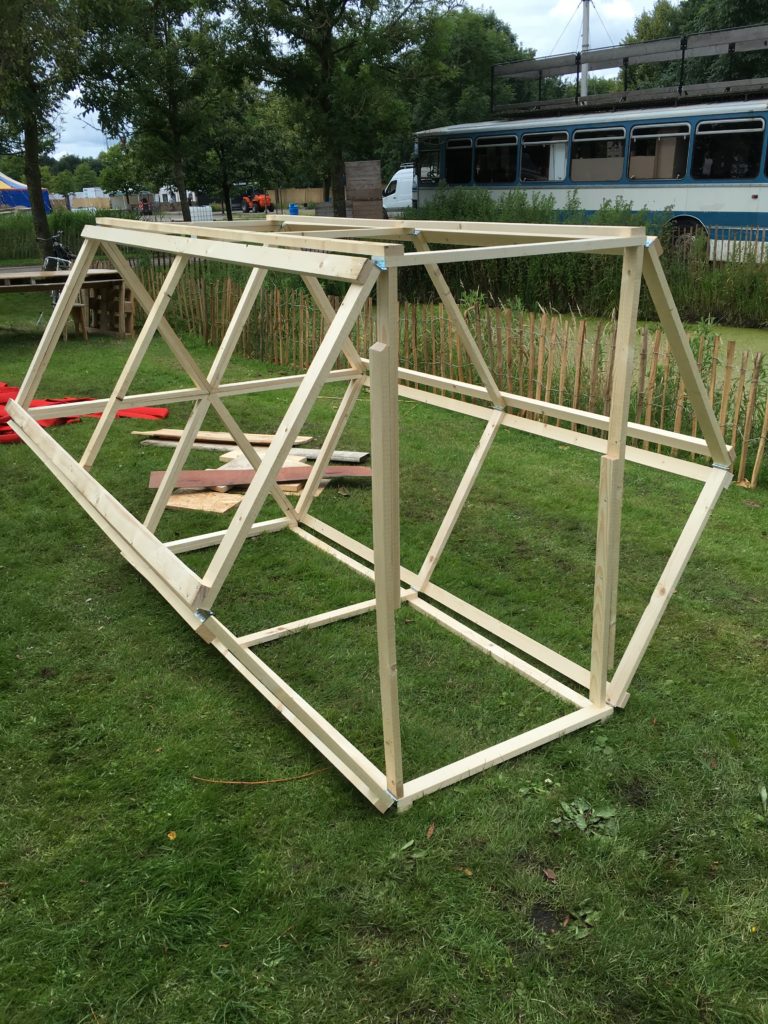
Beehive Hotel version 2.0
At DORP we finally got to work on version 2.0 of the Beehive Hotel. The first version was good but really hard to move. So for version 2.0 we wanted to go for a foldable design. This meant a complete redesign of our existing frame. Luckily for us we got partnered up with an architect student who helped us get the most out of our existing design. We also wanted this version to be as sustainable as possible so we only used scrap and trash material from the Welcome to the Village festival where DORP was located.
DORP is a prototyping playground to help create ideas for the festivals of the future. During DORP designers and students from all walks of life get matched up to think of new ways to create sustainable ideas.
